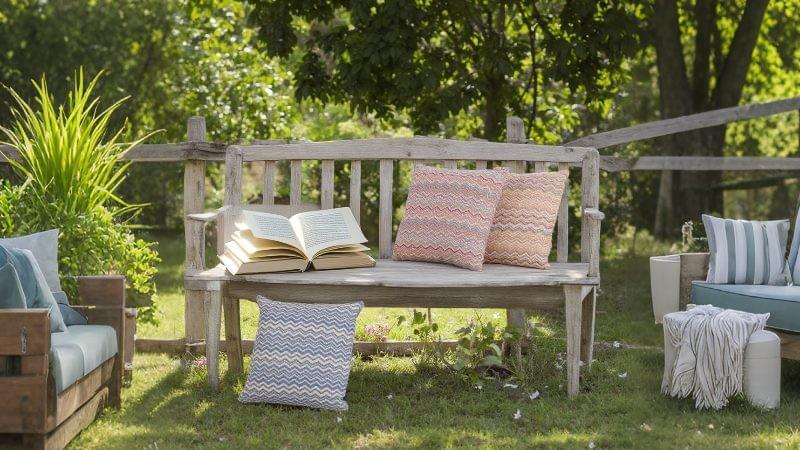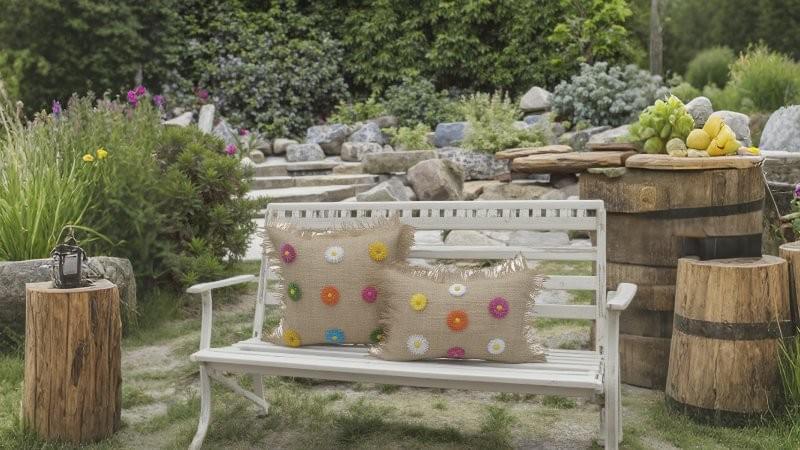On a summer afternoon, when the sunlight pours into a Bavarian private garden, a few brightly colored pillows are casually scattered on the rattan chairs. They are not only a decoration, but also carry the owner's pursuit of a comfortable life. In Germany, outdoor pillows are no longer just practical accessories, they are redefining the aesthetic standard of outdoor life. From the eco-friendly design of imitation natural fibers to the high-end texture of raffia, the market is evolving at an astonishing rate, behind which are consumers' new expectations for quality, design and sustainability.
Who's buying outdoor pillows?
Walk into a designer home furnishings store in Berlin and you'll notice two very different kinds of customers: a woman in her 40s stroking the texture of a faux hemp pillow, nodding at the label's “100% recycled polyester” label; and, not far away, a young couple smiling at the lightness and price of a faux raffia pillow.
The German market for outdoor pillows is a mirror that clearly reflects the attitudes of different consumer groups. Urban families and gardening enthusiasts with an age range of 25 to 55 are the most stable consumers. In environmentally conscious Hamburg or Berlin, middle-class people in their 30s to 50s are more inclined to pay for sustainable materials, even at a slightly higher price. The audience for raffia pillows, on the other hand, is concentrated in the higher income groups, who are willing to pay a premium for the unique texture of hand-woven fabrics. In contrast, faux raffia pillows have succeeded in attracting younger consumers between the ages of 25s to 40s by virtue of their affordable prices and stylish designs.

Market growth: the story behind the numbers
In 2023, the German outdoor pillow market shows a sharp category divide. Traditional outdoor pillows are firmly in the mainstream with sales of €220 million, while the three categories of faux natural fiber, raffia and faux raffia are capturing the market at an impressive rate. Among them, faux natural fiber category performance is particularly bright, is expected to 2025 sales will exceed €110 million, 17% annual growth rate shows a strong momentum. faux raffia category although the current size of only €50 million, but with a growth rate of 18% to show the potential for development should not be underestimated.
This growth is no accident. In the aftermath of the epidemic, Germans have placed an unprecedented emphasis on family space. Balconies and gardens have become extensions of the living room, and pillows are the most cost-effective “soft furnishing tool”. At the same time, tighter environmental policies and shifting consumer preferences have boosted demand for recycled materials.

Design trends: from utility to emotional resonance
Outdoor pillows are undergoing a metamorphosis in a wave of material revolution. Polyester still dominates the market, but walk into any home store and you'll feel the freshness of faux hemp and recycled cotton fabrics.
Raffia pillows, on the other hand, tell a different story. Their audience seeks never convenience, but the authenticity that comes from touching natural fibers with your fingertips. Of course, this natural beauty comes at a price: high prices and limited production make many consumers hesitant. Thus, smart faux raffia grass products came into being - through the PP yarn to restore the texture of grass knitting, at a pro-people's price to realize the urbanite's idyllic dream, although less rustic, but more of a touch of beauty.
Channels and Strategies: The Game of Online and Offline
Search for “outdoor pillows” on Amazon or Otto and you'll find thousands of options, from €9.90 sale models to designer co-branded models that cost hundreds of euros. While the convenience of e-commerce has intensified the price competition, offline channels remain irreplaceable. The manager of a high-end home store in Hamburg found that “customers always want to touch before ordering, especially those products labeled ‘natural’.”
The rise of niche brands is noteworthy. Berlin-based startup SACKit, for example, has amassed a large Instagram following thanks to its modular design and sustainable packaging. Their success reveals a trend: consumers are increasingly willing to pay for brand stories. As one customer commented, “I know it's 10 euros more expensive, but their commitment to carbon neutrality makes it worth it.”
Future Challenges and Possibilities
Environmental regulations are reshaping the industry. The European Union's REACH standards are making many traditional fabrics obsolete, and carbon footprint labeling could be the next competitive focus. In response, big brands such as IKEA are already promoting recycling programs, while smaller brands are betting on technological innovations - such as making dyes from algae extracts or developing biodegradable bionic fibers.
The incorporation of smart technology may come as a surprise. Think pillows that change color depending on the temperature, or smart labels with embedded sensors to remind you that it's time to wash. These concepts are still in the lab, but who knows? Five years ago, no one would have believed that faux raffia could become a favorite in urban homes.

Conclusion
In Germany,choosing an outdoor pillow is never just about comfort. It could be a statement about the environment, a declaration of taste or a desire for a certain lifestyle. From Bavarian gardens to Berlin apartment balconies, these small details of soft furnishings are quietly telling a bigger story - about reconnecting people, homes and nature.

